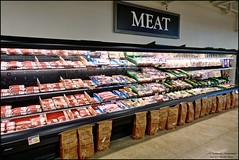Communicating importance of value-added products

Facing increasing pressure to quantify the value of export promotion efforts to investors, a U.S. industry organization retained WPI to develop a quantitative model that better communicated the importance of exports. The resulting model concluded that value-added meat exports contributed $0.45 cents per bushel to the price of corn, increasing support for that sector’s financial support of WPI’s client. In addition to serving the red meat industry with this type of analysis, WPI has generated similar deliverables for the U.S. soybean and poultry/egg industries.

 The Department of the Interior has added phosphate and potash, two key fertilizer ingredients, to the official Critical Minerals List. They are part of 60 minerals deemed vital to the U.S. economy and national security, with 10 of those being newly listed, that face potential risks from disrupt...
The Department of the Interior has added phosphate and potash, two key fertilizer ingredients, to the official Critical Minerals List. They are part of 60 minerals deemed vital to the U.S. economy and national security, with 10 of those being newly listed, that face potential risks from disrupt...
 Outside markets continued their downbeat on Friday but ag futures had a few recoveries from yesterday’s trouncing. Corn closed lower for the day and the week. The soy complex closed optimistically for the day but had a mixed week. Winter wheat closed lower on the day and the...
Outside markets continued their downbeat on Friday but ag futures had a few recoveries from yesterday’s trouncing. Corn closed lower for the day and the week. The soy complex closed optimistically for the day but had a mixed week. Winter wheat closed lower on the day and the...
 Ahead of next week’s USDA’s Crop Production and WASDE reports, WPI offers our latest projections for the corn, soybean, and wheat balance sheets. The key findings from this effort are that corn and soybean supplies are set to expand on upward yield revisions. Too, demand for corn an...
Ahead of next week’s USDA’s Crop Production and WASDE reports, WPI offers our latest projections for the corn, soybean, and wheat balance sheets. The key findings from this effort are that corn and soybean supplies are set to expand on upward yield revisions. Too, demand for corn an...